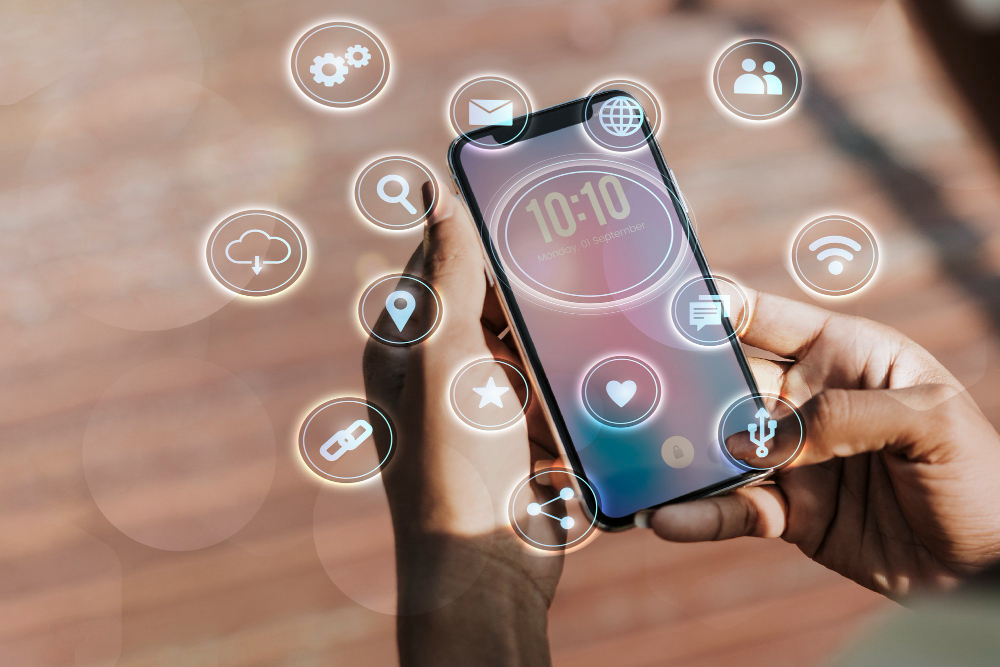In an era where connectivity and automation are revolutionizing our daily routines, the synergy between mobile technology and the Internet of Things (IoT) stands out as a game-changer. By integrating mobile devices with smart, interconnected systems, IoT is reshaping how we interact with the world, offering unprecedented convenience, efficiency, and innovation. This blog delves into how mobile technology and IoT are interwoven, exploring their impact on various aspects of life and what the future holds.
1. Understanding IoT and Mobile Technology
a. What is IoT? The Internet of Things (IoT) refers to the network of physical devices embedded with sensors, software, and other technologies that connect and exchange data over the internet. These devices range from household appliances and wearables to industrial machines and infrastructure.
b. How Mobile Technology Fits In: Mobile technology encompasses devices such as smartphones, tablets, and smartwatches, which provide the interface through which users interact with IoT systems. Mobile devices are integral to managing, monitoring, and controlling IoT-connected devices, making them central to the IoT ecosystem.
2. The Synergy Between Mobile Technology and IoT
a. Seamless Connectivity: Mobile devices act as the primary interface for managing IoT devices. Through mobile apps, users can control smart home systems, monitor health metrics from wearables, or adjust settings on connected appliances. This seamless connectivity simplifies interactions and enhances user convenience.
b. Real-Time Data Access: IoT devices generate vast amounts of data, which can be accessed and analyzed in real-time via mobile devices. This capability enables users to make informed decisions, whether tracking fitness goals, monitoring home security, or optimizing energy consumption.
c. Automation and Control: Mobile technology allows users to automate and control IoT devices from anywhere. For example, you can set schedules for smart thermostats, receive alerts from security cameras, or even control lighting systems remotely. This level of automation enhances efficiency and offers greater control over various aspects of daily life.
3. Real-World Applications of Mobile Technology and IoT
a. Smart Homes: Smart home technology, one of the most prominent applications of IoT, involves interconnected devices such as smart thermostats, lighting, and security systems. Mobile apps allow users to control these devices remotely, set automation rules, and receive notifications about their home’s status. For instance, you can turn off the lights from your phone or adjust the thermostat while you’re away from home.
b. Wearable Technology: Wearable devices like fitness trackers and smartwatches are perfect examples of IoT in action. These devices monitor health metrics such as heart rate, steps taken, and sleep patterns. Mobile apps sync with these wearables to provide insights, track progress, and offer personalized health recommendations.
c. Smart Cities: IoT is driving the development of smart cities, where interconnected systems manage infrastructure and services more efficiently. Mobile technology enables citizens to interact with smart city services, from reporting issues to accessing real-time information about public transportation or air quality.
d. Industrial IoT (IIoT): In industrial settings, IoT devices monitor machinery, track inventory, and optimize operations. Mobile technology allows managers to access real-time data, receive alerts, and control systems remotely, improving efficiency and reducing downtime.
e. Connected Vehicles: Modern vehicles are increasingly equipped with IoT technology, enabling features like real-time navigation, remote diagnostics, and driver assistance systems. Mobile apps provide drivers with information about their vehicle’s performance, maintenance needs, and even assist in finding nearby charging stations for electric vehicles.
4. Benefits of Integrating Mobile Technology with IoT
a. Enhanced Convenience: Mobile technology provides a user-friendly interface for managing and interacting with IoT devices, streamlining everyday tasks and enhancing overall convenience. Whether it’s adjusting home settings or tracking health metrics, mobile apps make it easier to stay connected and in control.
b. Improved Efficiency: IoT devices and mobile technology work together to optimize various processes, from managing energy consumption in smart homes to streamlining operations in industrial settings. Automation and real-time data access lead to more efficient use of resources and improved productivity.
c. Increased Safety and Security: The integration of mobile technology with IoT enhances safety and security through advanced monitoring and alert systems. Users can receive notifications about potential security breaches, track their health metrics, and ensure their home or vehicle is in optimal condition.
d. Greater Personalization: Mobile apps and IoT devices offer personalized experiences based on user preferences and behaviors. For example, smart home systems can learn your schedule and adjust settings accordingly, while fitness trackers provide tailored recommendations based on your activity levels.
5. Future Directions and Innovations
a. Advanced AI and Machine Learning: The future of IoT will likely see deeper integration with artificial intelligence (AI) and machine learning, enabling even smarter devices and systems. AI can analyze data from IoT devices to predict trends, automate complex tasks, and provide more accurate insights.
b. Enhanced Connectivity with 5G: The rollout of 5G technology promises to enhance IoT applications by providing faster data transfer speeds and lower latency. This will improve the performance of connected devices and enable new applications, from advanced remote control to real-time data analysis.
c. Greater Emphasis on Security and Privacy: As IoT devices become more prevalent, ensuring their security and protecting user privacy will be paramount. Future developments will focus on implementing robust security measures, encryption, and privacy controls to safeguard data and prevent breaches.
6. Conclusion
The convergence of mobile technology and the Internet of Things is transforming how we interact with our environment, offering unprecedented convenience, efficiency, and innovation. From smart homes and wearable technology to connected vehicles and smart cities, the integration of these technologies is enhancing our daily lives and reshaping the future.


